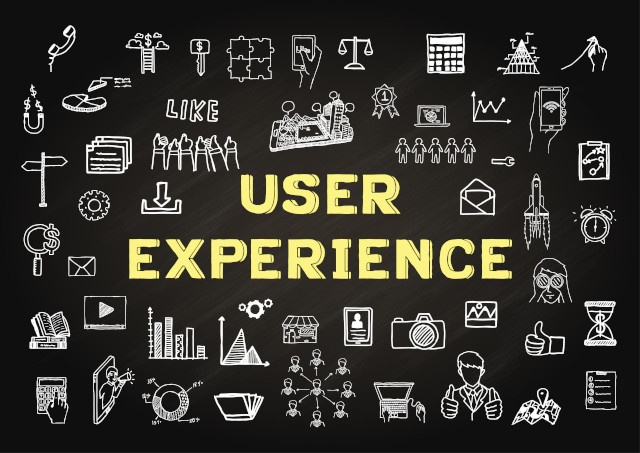
It sounds so obvious — when designing a new digital product, developers should take into account the experience of end-users. Yet in practice, user experience research (UX) is often ignored or, at best, treated as an afterthought in favor of the hunches and opinions of the founders, developers, or product team themselves.
We take a look at the evolution of user experiences and user interfaces (UI) and how the changing demographics of users have transformed everyday products to illustrate why real user experience data should be a crucial part of your product development lifecycle.
User interfaces refer to more than just the visual elements but include everything the user sees and touches when using an application or interacting with a product, for example, touchscreens and screens of digital devices such as iPads or mobile phones.
User experience, on the other hand, is how a user feels when he or she uses an app or visits a web page. This can be a positive or negative experience and depends on the effectiveness of the UI.
It makes sense that the person who designs the UI needs to understand how users think in order for the experience to be intuitive.
Products should be designed in a way that makes them easy to use and engaging to interact with. This is where UX research or user design research comes into play.
Best practices and user expectations of technology products (and all products for that matter) evolve over time because of changes in human behavior and this has a direct impact on product development.
Think back to the first computers in the 70s which could only be used by programmers. This then evolved to a point where anyone could use a computer without the need to understand code.
This meant the UI of computers had to change to be accessible to a “new” casual user with little technical knowledge. Without user-friendly interfaces, the first consumer computers simply wouldn’t have been successful in a broader market. So, the main interface started looking more like a microwave panel with physical buttons and menus.
Some refer to this phenomenon as the “appliancification” of computers — in other words, we have moved away from computers as a platform and closer to computers as an appliance. Appliancification can be defined as the process of packaging a complicated process into a simple, easy-to-use interface — allowing the person using the appliance to use it without understanding how the process works. Smartphones are a good example of this.
Nowadays, Generation Z doesn’t use computers in the same way as their parents. Today’s demographic is a different, more sophisticated type of computer user who has very different expectations and preferences because of the widespread use of mobile phones and tablets. Instead of desktop PCs with relatively large screens, keyboards, trackpads, and a mouse — they expect laptop devices with smaller screens for some devices, multimedia interfaces, flat touch screens, and virtual keyboards.
This once again meant that user interfaces had to be adapted to meet the needs of the user — for example, smaller screens required new methods of presenting control interfaces.
As society becomes more comfortable with the use of technology and devices, user expectations continue to shift. Today’s users need less information and visual cues when using devices. Less is more in UI design.
Today’s users also want to use a product in the same way, regardless of device, screen size, or interface.
It is clear therefore that if the UI doesn’t evolve to meet the shifting needs of today and tomorrow’s users, the product becomes less useful and even irrelevant to the user.
UX research, as we’ve seen above, is much wider than just understanding today’s application or computer users, but entails a thorough understanding of the human experience. Fully understanding human behavior, especially as the device and user demographic shifts, is the only way to make great products.
Understanding what users actually want and need may be very different in some cases than what the product development team thinks. This is why UX research is so important. It takes the guesswork out of product design and UX innovation. It also means the user experience is not sacrificed for features championed by the product development team without proper validation.
Human behavior evolves all the time, which implies that UX research can’t be limited to a one-off study at the start of the development process, but should be an integrated discipline that forms a key part of the ongoing life cycle of every product.
For example, looking towards the — not so distant — future, we see boundaries between the virtual and physical world disappearing. This means the way we engage and interact with systems and applications will need to become more intuitive and natural. Products that don’t adapt to this change in human behavior will almost certainly become obsolete.
There are various user research techniques, and which methods you need for the development of your product depends on different factors, including the type of product, target audience, your budget, and the development phase of the product.
Generative user research constitutes a discovery stage during which you discover and analyze users’ behavior, needs, and motivations to bring context and insights to product strategy and design.
Research methods during this stage include competitive analysis, focus groups, surveys and user interviews, card sorting, journey mapping, personas and scenarios, and Joint Application Development sessions (JAD).
Evaluative UX research is applied to evaluate the product throughout the different phases of design and could include A/B testing, design critiques, eye-tracking, and usability testing.
New technologies such as Artificial intelligence (AI) and machine learning will also increasingly be used to measure and predict human behavior, adding to the depth of feedback data that can be used to inform UX design and development of future products and applications. This type of data-informed design combines design that is intuitive and educated with machine learning.
One of the problems with UX research as an afterthought, or the absence of UX research altogether, is that it leads to a “plaster” effect of “tweaking” the current UX/UI of a product to try to adapt it to a shifting paradigm. This is akin to fixing an old car rather than buying a new one and may mean that the outdated UI that got you to the party in the first place could become your greatest liability moving forward. No design is perfect, of course, but if it stays stagnant for too long it becomes out of date, which could lead to a drop in customer engagement and ultimately profit. If your product design is not in line with current user experience paradigms, customers are less likely to buy your product.
The answer is not always straightforward. If your company or product is still in the early stage of trying to find a market fit and validation with limited capital, UX research and redesigning the UI may not be viable. If time is tight, you could consider doing UX research post-launch and then fixing the issues you discover.
Rather than skipping the UX research altogether, you could also consider Lean UX, which entails launching a minimum viable product (MVP). This will help to avoid assumptions about user needs and expectations and give you a chance to fix issues before going onto the next stage.
However, if the product has proven viability and you’re headed for series A, B, or C, now is the time to cross the chasm. In fact, it may even be too late.
The internet has many examples of companies that used UX/UI research and subsequent redesigns to boost their business. One example of data-informed UX success is the redesign of the Hubspot homepage, which led to increased engagement in critical CTAs, increased trial signups, and increased engagement with navigational elements.
Also, read the famous UX case study about the $300 million button which shows how changing one button revolutionized the business of a very big e-commerce company that can’t be named for legal reasons.
This latter case study clearly shows that even though the user may sometimes settle for their own workarounds to a suboptimal UI, you as the owner/developer will never know how the product could be better if you don’t do UX research.
From a product development point of view, the gold is in the nuance of user interactions. It’s the difference between a good product and a great product.
A product with great features and functionality that doesn’t allow users to do the things they want to do in the way they want to do it will never reach its full potential at best and at worst, is doomed to failure.
At REEA Global we believe UX research should be at the center of your product development process. As company owners who have developed our own successful products, we have the experience and skills to help you integrate UX research into every phase of your product’s development to ensure the end result is the best it can possibly be.
In the high-stakes world of private equity, effective post-acquisition integration is crucial for maximizing investment value.This complex task involves more than just merging financial statements; it requires a comprehensive blending of systems, cultures, and operational strategies.
